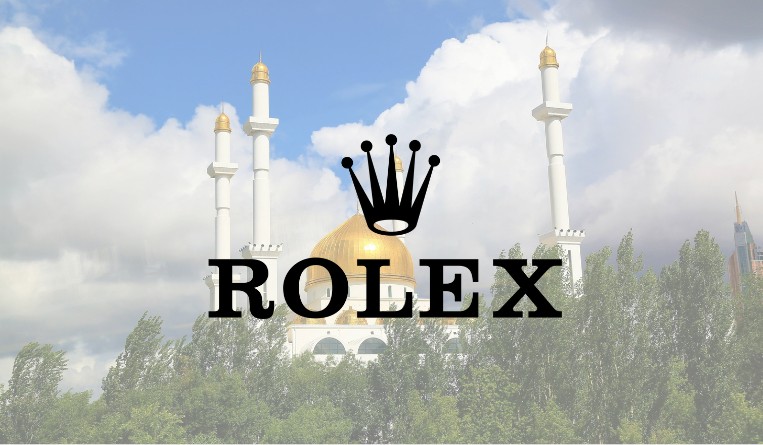Disputed trademark based on hieroglyphic found in bronzes
Beijing - A legal wrangle over a goat's head trademark - itself based on an ancient Chinese hieroglyphic - attracted widespread media attention in late 2009.
The case raised a range of issues about what can and should be trademarked - and by whom.
The dispute began when Yu Wenqing, general manager of Xingyelong Garments Co, sued Hengyuanxiang Group, a well-known maker of wool garments, in Beijing No. 2 Intermediate People's Court, claiming infringement on his trademark and seeking more than 10 million yuan in compensation.
A month later, Hengyuanxiang countersued Yu and his company in Changshu, Jiangsu province claiming copyright infringement on the logo it created in 1997 and registered with the national copyright office in 2002.
As legal experts debated whether trademark or copyright protection should have priority, Hengyuanxiang withdrew its claim in early February after a trial the previous month.
Hengyuanxiang's most likely withdrew its suit because it had a slim chance of wining, said Liu Ming, Yu's lawyer.
Beijing - A legal wrangle over a goat's head trademark - itself based on an ancient Chinese hieroglyphic - attracted widespread media attention in late 2009.
The case raised a range of issues about what can and should be trademarked - and by whom.
The dispute began when Yu Wenqing, general manager of Xingyelong Garments Co, sued Hengyuanxiang Group, a well-known maker of wool garments, in Beijing No. 2 Intermediate People's Court, claiming infringement on his trademark and seeking more than 10 million yuan in compensation.
A month later, Hengyuanxiang countersued Yu and his company in Changshu, Jiangsu province claiming copyright infringement on the logo it created in 1997 and registered with the national copyright office in 2002.
As legal experts debated whether trademark or copyright protection should have priority, Hengyuanxiang withdrew its claim in early February after a trial the previous month.
Hengyuanxiang's most likely withdrew its suit because it had a slim chance of wining, said Liu Ming, Yu's lawyer.
Its logo originated from an ancient Chinese hieroglyphic character for a goat found on ancient bronzes.
It is hard to distinguish the logo from the ancient original, so Hengyuanxiang would have difficulty supporting its copyright claim, said Ma Qiang, a partner of the Unitalen Law Office.
Attorney Liu said he is confident the countersuit would lose in a court of law. "If they could succeed in their claim, I could also say that I have the copyright to the poems by Li Bai (a renowned poet in Tang Dynasty 618-907)."
Hengyuanxiang will now focus on the upcoming trademark suit, Liu added.
Twists and turns
Chen Zhongwei, Hengyuanxiang vice-president, told China Daily that his company completed designing the logo in 1997 and began to use it on the company's clothes the following year.
"We used the logo first," Chen said, accusing Yu of malicious trademark registration.
Xingyelong, founded in 1999, signed a franchise agreement with Hengyuanxiang to make and sell Hengyuanxiang-branded jackets and sports parkas in 2001.
However, the two ended their cooperation in 2006 after Xingyelong was investigated by commerce bureaus in Harbin, Shanghai and Chengdu for producing fake Hengyuanxiang products, according to the Yangtze Evening Post.
It is hard to distinguish the logo from the ancient original, so Hengyuanxiang would have difficulty supporting its copyright claim, said Ma Qiang, a partner of the Unitalen Law Office.
Attorney Liu said he is confident the countersuit would lose in a court of law. "If they could succeed in their claim, I could also say that I have the copyright to the poems by Li Bai (a renowned poet in Tang Dynasty 618-907)."
Hengyuanxiang will now focus on the upcoming trademark suit, Liu added.
Twists and turns
Chen Zhongwei, Hengyuanxiang vice-president, told China Daily that his company completed designing the logo in 1997 and began to use it on the company's clothes the following year.
"We used the logo first," Chen said, accusing Yu of malicious trademark registration.
Xingyelong, founded in 1999, signed a franchise agreement with Hengyuanxiang to make and sell Hengyuanxiang-branded jackets and sports parkas in 2001.
However, the two ended their cooperation in 2006 after Xingyelong was investigated by commerce bureaus in Harbin, Shanghai and Chengdu for producing fake Hengyuanxiang products, according to the Yangtze Evening Post.
Xingyelong then applied for trademark registration in 2001 and the application was approved by the State Administration for Industry and Commerce (SAIC) in 2003 for use on clothing, shoes and hats. Later, the trademark was transferred to Yu.
Anyone disputing a registered trademark can file a complaint with the Trademark Review and Adjudication Board of the SAIC for a ruling within five years of approval, according to the China's Trademark Law.
The goat trademark has passed the five-year dispute period, so the owner's rights should be upheld, Liu said.
Chen from Hengyuanxiang declined to talk about why his company failed to challenge the trademark in the given five years, calling it "a sensitive issue".
Hengyuanxiang still stands a chance of rescinding Yu’s rights to the trademark if it can prove the registration was malicious, Ma said.
The extent of Hengyuanxiang's use of the trademark before it was registered and Xingyelong's access to the mark during the franchising relationship might serve as evidence of whether malice is found, Ma added.
Hengyuanxiang long-standing trademark that uses three Chinese characters was recognized as well-known by SAIC in 1999, which noted the garment maker had established a longstanding reputation over years of development, according to the company.
"The three Chinese characters of Hengyuanxiang are no doubt a nationwide famous trademark," Liu admitted. "Yet under the company's product lineup, there are about 200 marks, including the goat-style trademark owned by Yu. Not all of them are part of the famous trademark under protection."
Anyone disputing a registered trademark can file a complaint with the Trademark Review and Adjudication Board of the SAIC for a ruling within five years of approval, according to the China's Trademark Law.
The goat trademark has passed the five-year dispute period, so the owner's rights should be upheld, Liu said.
Chen from Hengyuanxiang declined to talk about why his company failed to challenge the trademark in the given five years, calling it "a sensitive issue".
Hengyuanxiang still stands a chance of rescinding Yu’s rights to the trademark if it can prove the registration was malicious, Ma said.
The extent of Hengyuanxiang's use of the trademark before it was registered and Xingyelong's access to the mark during the franchising relationship might serve as evidence of whether malice is found, Ma added.
Hengyuanxiang long-standing trademark that uses three Chinese characters was recognized as well-known by SAIC in 1999, which noted the garment maker had established a longstanding reputation over years of development, according to the company.
"The three Chinese characters of Hengyuanxiang are no doubt a nationwide famous trademark," Liu admitted. "Yet under the company's product lineup, there are about 200 marks, including the goat-style trademark owned by Yu. Not all of them are part of the famous trademark under protection."
Whether the trademark in dispute can be recognized as famous in the legal procedure underway remains doubtful, Liu said.
"The registered trademark is mine," Yu added. "I have 100 percent confidence I will retain it."
Trademark review
Hengyuanxiang has filed an application to the SAIC to void the trademark and the application has been accepted.
Chen said SAIC released a policy to local industrial and commercial authorities on the issue in early January, ordering that no more trademark cases against Hengyuanxiang should be accepted until the final judgment is made.
Though China's Supreme Court has instructed lower courts that intellectual property cases should not be suspended awaiting the decision of administrative bodies like the Trade Appeal Board of the SAIC, the Beijing court might not begin the trial until the board announces its decision, Liu said.
Though acting on behalf of the plaintiff, Liu said that personally he was surprised at Hengyuanxiang's "negligence" in its intellectual property management.
"As a lawyer, I will do my best to help my client protect his legal rights," Lui said. "Yet it will be of greater significance if more companies can increase their awareness of intellectual property management and protection through the dispute."
Chen said the lawsuit is "a good thing" for his company. Hengyuanxiang now plans to establish an intellectual property center to increase protection efforts.
"The registered trademark is mine," Yu added. "I have 100 percent confidence I will retain it."
Trademark review
Hengyuanxiang has filed an application to the SAIC to void the trademark and the application has been accepted.
Chen said SAIC released a policy to local industrial and commercial authorities on the issue in early January, ordering that no more trademark cases against Hengyuanxiang should be accepted until the final judgment is made.
Though China's Supreme Court has instructed lower courts that intellectual property cases should not be suspended awaiting the decision of administrative bodies like the Trade Appeal Board of the SAIC, the Beijing court might not begin the trial until the board announces its decision, Liu said.
Though acting on behalf of the plaintiff, Liu said that personally he was surprised at Hengyuanxiang's "negligence" in its intellectual property management.
"As a lawyer, I will do my best to help my client protect his legal rights," Lui said. "Yet it will be of greater significance if more companies can increase their awareness of intellectual property management and protection through the dispute."
Chen said the lawsuit is "a good thing" for his company. Hengyuanxiang now plans to establish an intellectual property center to increase protection efforts.


 CHINA intellectual PROPERTY LAWYERS NETWORK
CHINA intellectual PROPERTY LAWYERS NETWORK







 Home
Home Previous
Previous 





Comment